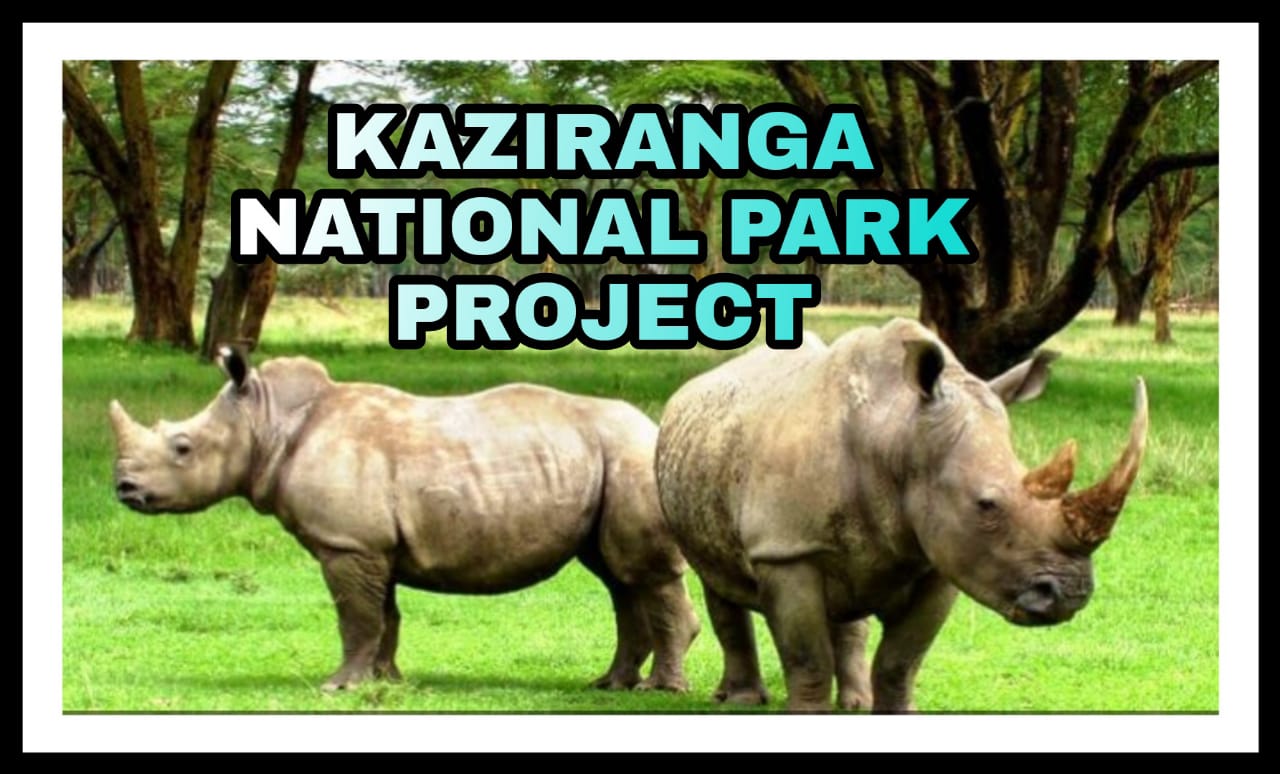Kaziranga National Park Project For School Students
Kaziranga National Park project is the topic given to school students. Few students are also asked to prepare a project on Kaziranga National Park. You may also be asked to write an essay on this particular topic. Moreover, a school project give the child an opportunity to dive deeper and showcase their creativity in academics as well as allow the students to acquire knowledge. It also help those who struggle with written tests and mugging up long questions and answers. So, if you have to complete a project or write an essay on Kaziranga National Park, here you will get complete help and guidance.
In this blog post we have tried to cover all the important aspects and features of Kaziranga National Park. So, if you have got this topic from your Science, Social Science or English teachers, then this blog post article is going to be very helpful to you as well as will help you in completing your project in just 3 hours. So let’s begin.
Also read: 12 Places To Visit Near Me – In Chhattisgarh
Kaziranga National Park Project For School Students
Table Of Contents:
- Introduction
- Where is it located?
- What is it known For?
- What are the major animals found here?
- Kaziranga National Park: UNESCO world Heritage Center
- Best time to visit Kaziranga National Park
- Threats to biodiversity in kaziranga national park
- Conclusion
Introduction:
Kaziranga National Park is situated in Assam.
You know that it’s a beautiful state located in the North-Eastern part of India.
Kaziranga National Park, located in Assam is famous for one-horned Rhinoceros.
If you pass through NH-37 (National Highway) especially through the tea estates,
you can spot rhinoceros and wild elephants on your way.
Moreover, for the tourists, Nature lovers and wildlife photographers, Kaziranga National Park is a very famous holiday destination.
Where is it located?
Kaziranga National Park is situated mainly in Golaghat District and in Nagaon District of Assam.
It was established in the year 1908.
This National Park covers an area of 430 square kilometers.
It has a total of six ranges (divisions)
As it is difficult to look after the animals in Upper Assam, therefore, recently, satellite phones have been given to the officials to ensure connectivity.
History of Kaziranga National Park:

KAZIRANGA NATIONAL PARK PROJECT
It is said that before the establishment of the Kaziranga National park, Mary Curzon, the wife of the Viceroy of India, visited the park.
She was desperate to see the one-horned rhinoceros but couldn’t find one.
Therefore, the Viceroy of India (her husband) took action to protect this special species of the rhinoceros by initiating plans for their protection.
Thereafter, many meetings and a series of documentation, the Kaziranga Reserve Forest was established in the year 1905.
Finally, it was declared National Park in 1908.
What are the major animals found here?
Kaziranga National Park is home to around 2,200 one-horned rhinoceros.
This area has elephant grassy meadows, swampy lagoons, and dense evergreen forests.
Therefore, many animals such as one-horned rhinoceros, elephants, wild water buffalo and swamp deer take shelter in Kaziranga National Park.
Moreover, the broad diversity of wildlife beauty is the attraction point of Kaziranga.
Not only animals but you can also find varieties of birds here.
The tiger reserve is also an attraction point for many people.
Kaziranga National Park: UNESCO world Heritage Center:
The Kaziranga National Park was inscribed on the World Heritage List on 6th December,1985 by UNESCO.
Moreover, the Park is well known for its success in conserving the greater one-horned rhinoceros.
As far as the history of Kaziranga is concerned Lady Curzon first heard about Rhino of Kaziranga from her British Tea Planter friends.
She visited Assam in 1904.
Although she could not see the animal but spotted hoof prints with three toes which concerned Lady Curzon that such an animal exist.
On her return she persuaded Lord Curzon to declare 7,273,60 acres of Kaziranga as a reserved forest.
Finally Kaziranga was declared as Reserved Forest on 3rd January,1908 and was closed for shooting.
Best time to visit Kaziranga National Park:
The best time to visit the Kaziranga National park is from November to April.
The park remains closed from May to October every year for the visitors.
In the summer season, the climate in the Kaziranga gets dry and windy.
Therefore, at that time you can see animals around water bodies as they come to drink water and relax.
In the monsoon season, the Kaziranga National Park closes because of the warnings of Brahmaputra River Floods.
Threats to biodiversity in kaziranga National Park
Following are the major threats that have a direct bearing on the wildlife, habitats and values of the World Heritage site:
Poaching
Poaching (hunting and Killing) of Rhino is a major problem in Kaziranga. One horned rhino is the main target of poachers. Due to heavy demand and ever increasing price of Rhino horn in the illegal markets, incidents of Rhino poaching has increased. If this continues, rhinos are likely to get extinct.
Seasonal flooding:
Floods in Brahmaputra river of Assam is a regular feature. Although floods are good in maintaining the balance in vegetation, there are many side effects of flood as well. Death of wild animals, shortage of food and fodder, unattended animals, highway accidents and damage to infrastructure are some of the problems created by floods every year.
Climate change impacts:
Due to Climate change, Humans and wild animals face new challenges for survival. Frequent flood, intense drought, storms and global warming can directly harm animals. Change in climate is destroying the places they live and wreak havoc on people’s livelihoods and communities.
Human Interference:
Wildlife is on threat due to close proximity to human settlements. Encroachment of land in Kaziranga and illegal entry of people from Bangladesh has made the lives of wild animals in danger. Dhabas and resorts in sensitive zones have also posed threats to the wildlife in Kaziranga.
The other factors are:
- unplanned tourism
- highway traffic,
- spread of invasive species (mimosa) and livestock grazing.
Kaziranga National Park Project For School Students
Conclusion:
Kaziranga is a valuable asset of Assam. Moreover, It is a rare and beautiful place on earth. That’s why UNESCO recognizes it by including in the list of World Heritage Sites. Therefore, every person living in Assam must realize this fact and must feel proud. Moreover, Government agencies and local people must try to solve the problems of Kaziranga National Park together. Government must take the initiative in increasing public awareness so that every person can extend their helping hands. Kaziranga National Park is the home of some of the rarest wild animals. Strict vigilance and rules can protect this asset of ours.
Have you heard about the Bishnoi’s ? Everyone must learn the conservation of animals from the Bishnoi community of Rajasthan.
You may Like to read:
Assam Tea Gardens Have Their Own Time
Case Study Based Questions From Natural Vegetation And Wildlife – Term II (SOLVED)





Very nice post thanks for it
Thank you Ankit for your inspiring words.
Good and inspiring post by you thanks a lot 👍👍👍
Thank you Sir